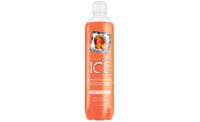The modern beverage warehouse is a world of contradictions. Due in part to SKU proliferation, beverage distributors are constantly adapting their warehouses to fit more product in a given amount of space.
“With limited warehouse space, most beverage companies are tasked with maximizing utilization of existing storage space,” says Lou Micheletto, warehouse product manager for the makers of Yale and Hyster lift trucks, NACCO Materials Handling Group Inc. (NMHG), Greenville, N.C. “Lift trucks need to lift heavier pallets to greater heights while delivering the maneuverability of smaller trucks. Customers are looking for that one truck that can do it all ‘from dock to stock,’ to minimize their fleet size and reduce their headcount.”
Lift truck suppliers are developing new options that respond to the many needs in the beverage industry, which include warehouse space constraints, new pallet sizes, operator comfort, and safety, attachment and accessory options as well as energy efficiency.
In addition, the machinery also must provide secure transportation of inventory, says Jeff Bowles, product line manager for Houston-based Mitsubishi Caterpillar Forklift America Inc. (MCFA).
“Beverage companies look for lift trucks that maximize load security based on the loose and fragile nature of the product and the variety of attachments that are used in this industry,” Bowles says. “While performance characteristics are very important, limiting product damage in a productive manner is paramount.”
Tight spaces
Yale highlights the ability of its new walk/ride truck model, the MPE060-080VG, to perform in tight spaces, such as crowded loading docks, the company says. The model has a 6,000- to 8,000-pound capacity range with a tight turning radius, short head length and control handle design.
The MPE060-080VG was designed with a heavy-duty undercarriage that maintains a stable load while reducing overall cost of ownership, Micheletto says. The model also has 6 inches of lift height for moving oversized pallets, the company says.
Specifically designed for narrow aisles, New Bremen, Ohio-based Crown Equipment Corp. designed the Crown SC 5200 Series of sit-down counterbalanced forklifts. The series features the shortest three-wheel, 3,000-pound lifting capacity truck in the industry with Crown’s integrated AC traction and hydraulic systems, explains Tim Quellhorst, senior vice president for the company.
“The Crown SC 5200 was designed to be a multipurpose workhorse that moves in and out of trailers, performs dock and ramp work and handles loads from staging and transporting to put-away,” Quellhorst says.
Warehouse space constraints have spurred some distributors to look upward, says Kenro Okamoto, electric product planning specialist for Toyota Material Handling U.S.A. Inc., Irvine, Calif.
“Since expanding horizontally usually means more cost, the preferred way to go is expand vertically,” Okamoto says. “This means higher rack heights, therefore lift trucks for these customers require better capacities to take their products higher into the racking. For beverage industry customers that stack inventory on the floor, having a lift truck with a small overall footprint is a must.”
Although many companies are expanding vertically, customers are not solely looking for lift trucks with tall mast heights, Okamoto says. Toyota has received requests for lift trucks that have 240-inch mast heights that also have the ability to maintain low-collapse mast heights, he says. These versatile models can reach product positioned within the racking or stack and can go into trailers with relatively low ceiling heights to drop off product, he says.
For high-density storage areas, MCFA brand Jungheinrich developed the exclusive transponder technology on Jungheinrich’s very narrow aisle trucks, which provides recognition of a truck’s exact location relative to racking positions at all times, Bowles says. In addition to location, the technology can slow a truck’s top speed automatically when it enters a high-traffic area and limit how high a truck’s mast can lift when vertical obstructions are present, he says. Models also can be equipped with Jungheinrich’s Warehouse Navigation System, which enables the very narrow aisle lift trucks to navigate between chosen pallet positions at the touch of a button, Bowles says.
MCFA designed the Cat high-capacity Class 1 electric pneumatic four-wheel model with soft ride solid pneumatic tires that improve shock absorption. This feature allows operators to more confidently handle beverage loads in warehouses where drains or varying floor conditions are present, Bowles says. The electric pneumatic trucks also have a wider footprint than other traditional sit-down warehouse trucks, which is particularly beneficial for secure load handling when operators are transporting multiple pallets side-by-side, he says.
Lift truck suppliers report several variations in pallet sizes that have increased requests for flexible lift truck solutions. NACCO’s Micheletto says select beverage companies are handling smaller pallets, which requires special forks on lift trucks. The company also is responding to different size pallets that require adjustable load back rests on walk-behind equipment, which NACCO is designing, he says.
On the other hand, Toyota Material Handling U.S.A. has seen many companies using larger pallet designs, Okamoto says.
“One of Toyota’s major customers has recently decided to have certain products placed and stored on large 48-inch by 40-inch pallets rather than a 37-inch by 32-inch pallet they would normally utilize,” he says. “This means more products per pallet, therefore heavier pallets.”
Jungheinrich designed its Class 3 walkie trucks with a laterally adjustable load backrest extension for quick changes to accommodate both 36- and 48-inch long pallets, Bowles says.
Operator prioritization
Ergonomics are some of the key features of Toyota’s new 8 Series 4-wheel electric lift trucks, which have up to 21 percent faster travel speeds than the 7 Series models, Okamoto says. The 8 Series features mini-levers, which some operators prefer over conventional hydraulic levers, he says. The line also features a larger floorboard area, small diameter steering wheel, increased visibility to the forks and overhead loads, and a full suspension seat design, he explains.
The company also offers its exclusive patented System of Active Stability (SAS) that uses separate sensors to monitor load height and weight, truck travel speeds and angular speed to help ensure that all four tires remain on the floor, Okamoto says.
NACCO highlights the human-engineered operating controls that are available on its new Yale ERC030-040VA and Hyster E30-40XN model lift trucks that were released this year. The trucks also have the following features: higher accelerations and traction speeds, higher lift speeds, better energy consumption, bottler’s tilt option for local distribution, narrow width for easier bulk stacking and better ergonomics, says David McNeill, manager of product strategy for electric rider trucks for NACCO Materials Handling Group.
For operators who pick pallets while walking through a warehouse, MCFA offers an optional Pro Pick feature for the Jungheinrich ECR 327. Pro Pick enables the operator to maneuver the truck from alongside the truck while the person picks the orders, Bowles says.
Nissan Forklift, Marengo, Ill., introduced the APX Advanced AC-Powered Walkie Pallet Truck that has an offset tiller arm to allow the operator to walk beside the truck, says Steve Cianci, director of marketing and product management for the company. The model also features a standard tiller-up switch that lets operators drive the truck and turn in a vertical position, even in tight confines like delivery trucks, he says.
Improved visibility was a factor during Crown’s design of the Crown C-5 Series cushion forklift, which increases operators’ field of view by 5 feet compared to other IC forklifts, Quellhorst says. The C-5 Series also features John Deere power to push more loads and keep attachments operating with heavy loads, Quellhorst says.
Load weight concerns also increase as distributors embrace multiple pallet movement, which MCFA’s Bowles foresees as a continuing trend. “Handling multiple loads will also continue to be a critical method of transport to increase productivity, whether in the form of low-lift walkie riders with extended fork lengths that can transport up to three ground-level pallets or via multiple load handling attachments used on traditional sit-down lift trucks,” he says.
Toyota has seen space constraints affect the demand for accessories, especially single-double attachments that allow lift trucks to handle two pallets at a time, Okamoto says.
“The most predominant request is to provide a lift truck that maintains good capacity with attachments, such as single-doubles, while keeping a small profile,” Okamoto says. “Customers, due to space restrictions, are always looking for better ways to store inventory in what space they have.”
The popularity of attachments in the industry inspired Yale to offer a wider range of capacities in its 2-3t CBB and Hyster ERC045-070VG and E45-70XN products to better handle attachments, such as single-double pallet handlers, McNeill explains.
Energy efficiency
Yale is developing and producing lift trucks that improve efficiency and reduce energy consumption, Micheletto says. The company offers the newly designed Yale walk-behind pallet truck model MPB/MPW050 that comes with a high-frequency charger and optional AGM batteries to extend time between charges while extending overall battery life. The model also provides a stiffer frame with improved pallet entry, he says.
In addition to internal combustion engines, Toyota offers products powered by industrial batteries, Okamoto says. He says high-quality electric pallet trucks are popular within the industry with features such as pin-wheeling, tall load backrests and reliability.
Toyota offers the 8FBCU four-wheel electric model in 4,000- to 6,500-pound capacities, which incorporates AC technology resulting in longer run-times and quicker acceleration, Okamoto says.
Nissan Forklift introduced the 80-volt AC-powered sit-down electric rider known as the Platinum QX series. The model offers zero emissions with greater power than the standard 36- or 48-volt trucks and features an all AC system that requires major maintenance after every 1,200 hours of service, Cianci says.
“QX users are getting a shift and a half of run time before needing a battery change or charge,” he says. “Its 3+1 performance modes allow the truck’s settings to match the operator’s driving experience and/or the application needs. It has several battery-saving features including regenerative braking, auto shut-off and on-demand power steering.”
MCFA’s Jungheinrich has a line of electric products, including heavy-duty stackers and low-lift end rider lines, Bowles says. Jungheinrich’s exclusive 48-volt high-lift order pickers offer a new level of performance, technology and energy efficiency, Bowles says. The trucks also can be equipped with Jungheinrich’s Warehouse Navigation feature and transponder technology, he says. BI






